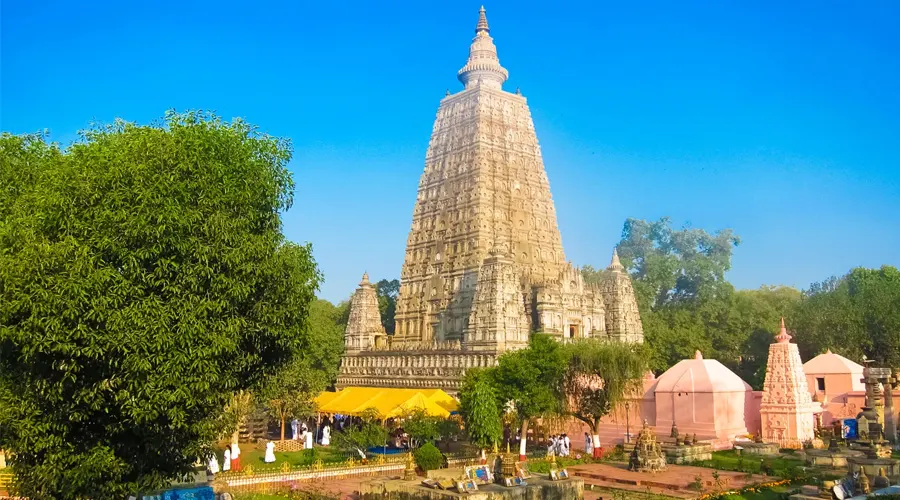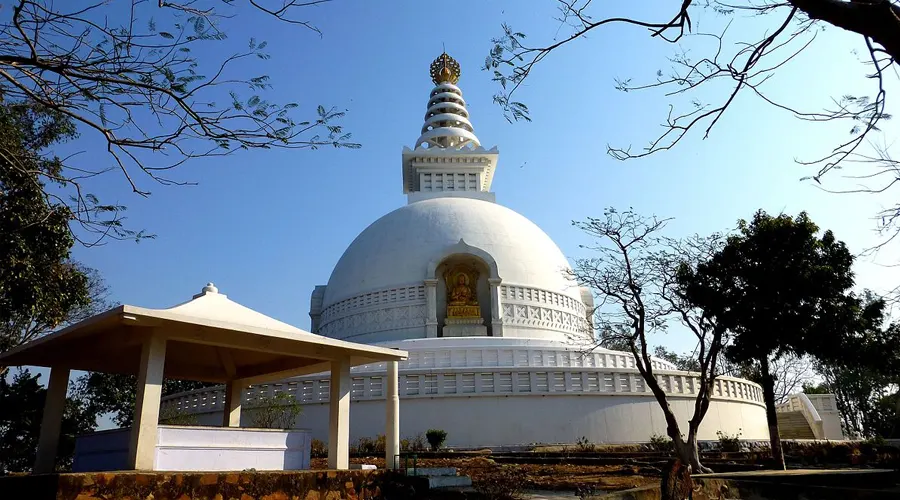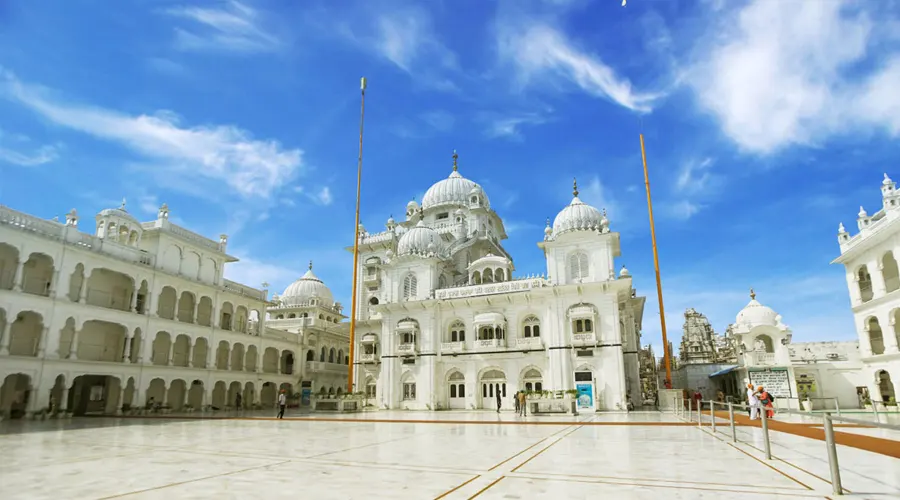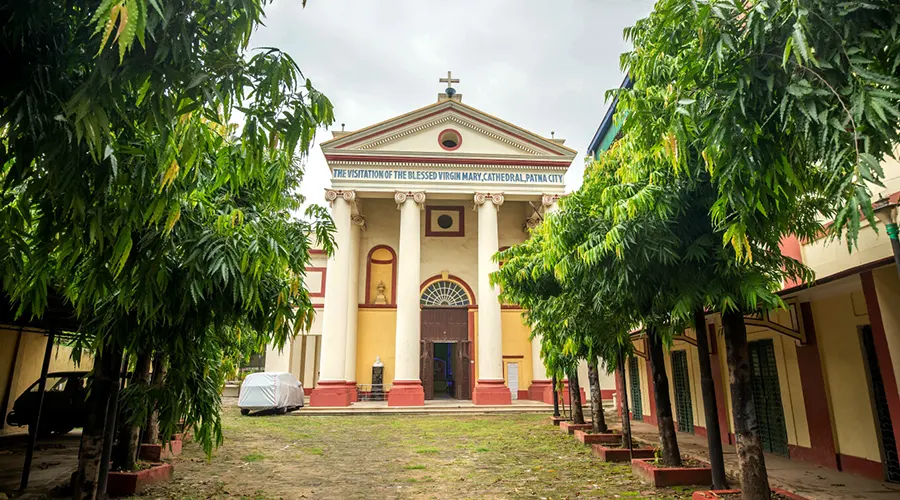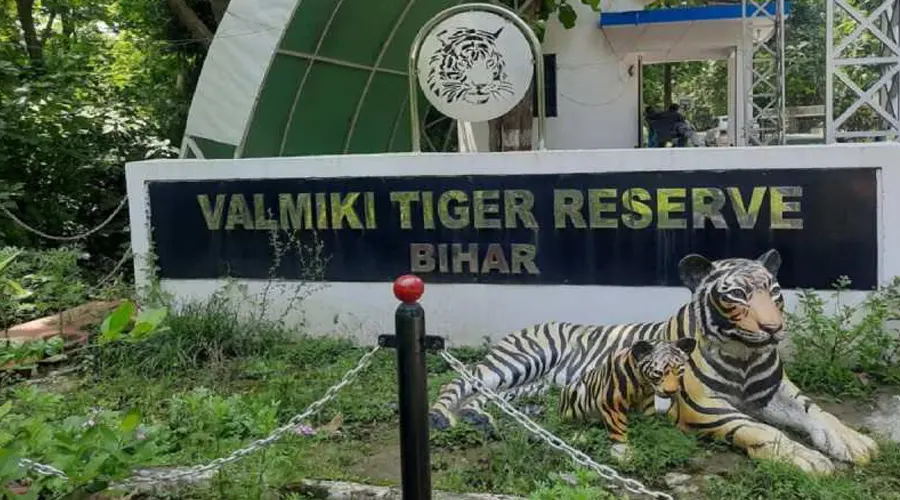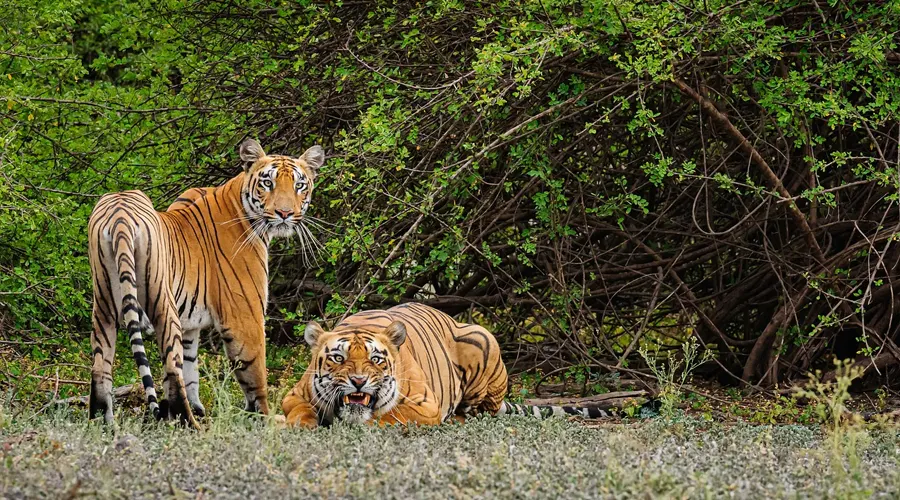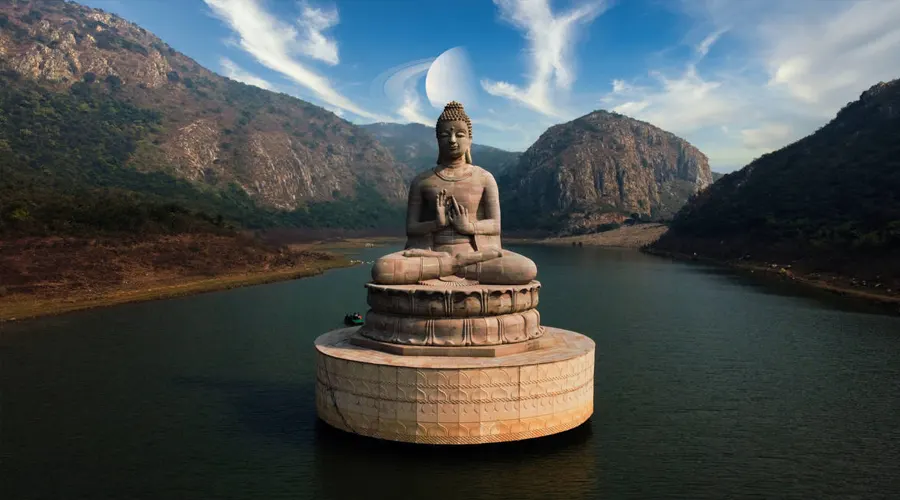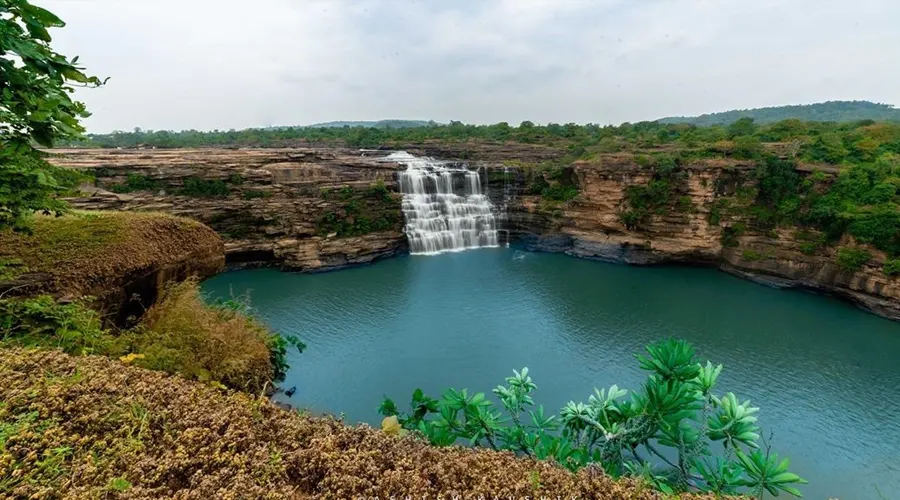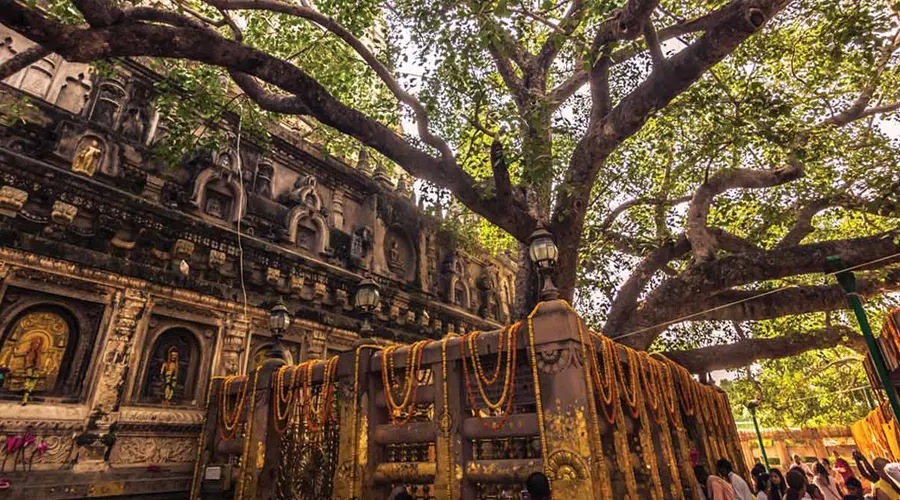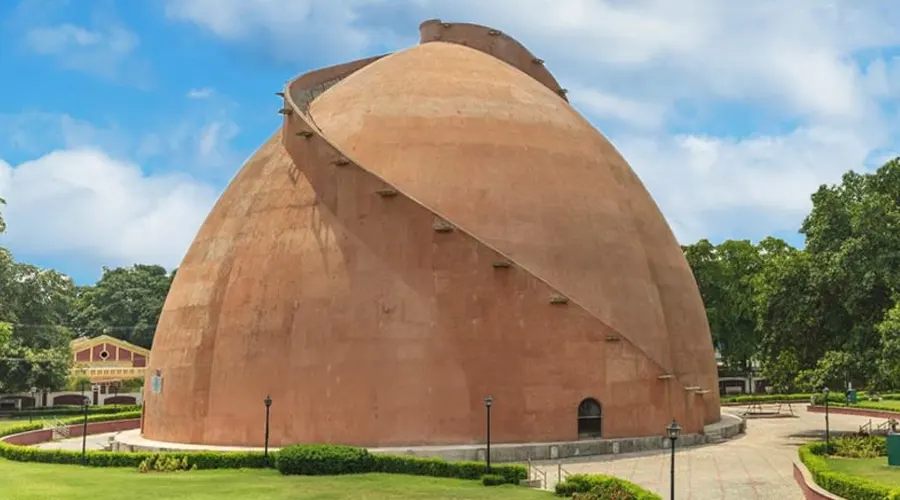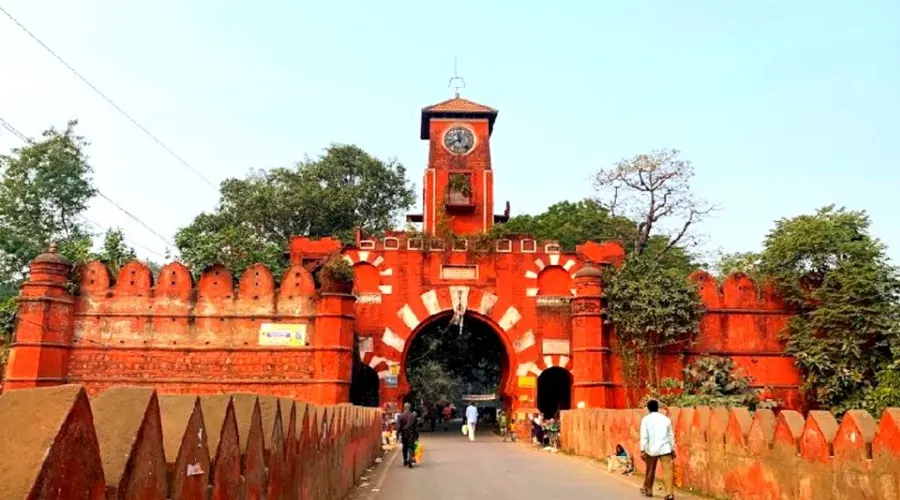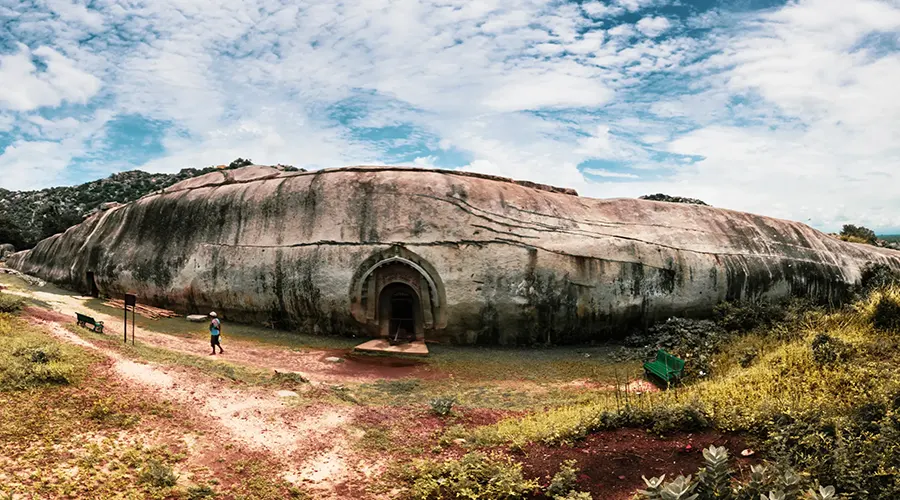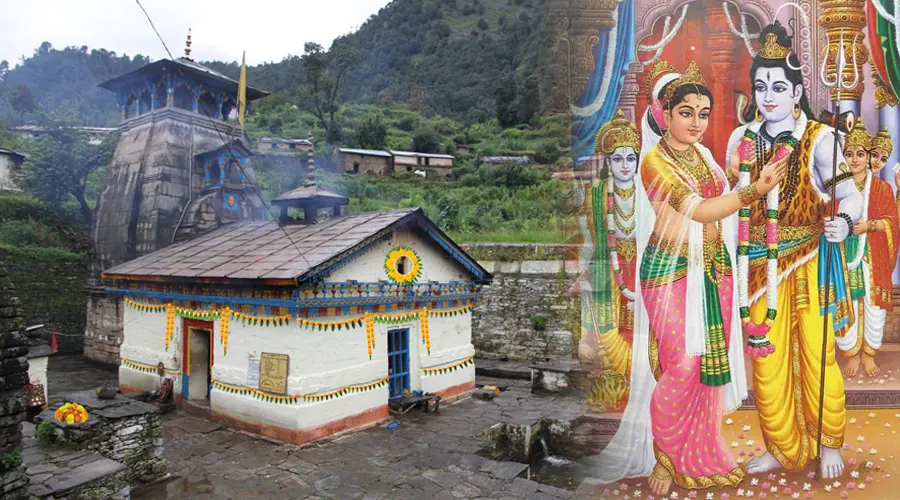Rohtasgarh Fort
The Rohtas Fort is constructed on a plateau over the top of a hill with steeply rising sides. The steps directing to the fort are cut into the limestone of the hill. In the past, many streams crossed the plateau and the soil was productive, which helped in the easy growth of the crops so that the inhabitants of the fort could hold out for months against any enemy besieging the fort.
Thick forests and wild animals surrounded the hill providing natural barriers and dacoits provided other man-made barriers in the past. Thus the fort which was believed to be invincible, could not be taken by force but only using deceit.
It takes around two hours from the district headquarters at Sasaram to reach the foot of the hill over which is the Rohtas Fort. The fort is situated at about 1500 feet above sea level. There are about 2000 odd limestone steps at Medha Ghat meant for the most common mode of ascent to the fort on foot at present. For the visitor, they are an exhausting climb of an hour and a half. At the end of the climb, one reaches the boundary wall of the fort.
A lovely waterfall is seen during the rains, which falls over the fortifications, and is mesmerizing to watch and hear from a distance. A dilapidated gate with a cupola can be seen, which is the first of several provided for well-guarded entrances to the fort. From here one has to walk another mile or so before the ruins of Rohtas can be seen.
History of Rohtasgarh Fort
Some Historians say that the fort was built by Raja Harishchandra who belonged to the Solar dynasty. He named the fort after his son, Rohitashv.
Rohtasgarh Fort under Khayaravala Dynasty
Rohtasgarh Fort was under the rule of Shri Pratapa during 1223 CE. There is an inscription found in the fort which tells that Pratapa defeated the Yavana army and captured the fort. As per the inscription, the historians concluded that Pratapa belonged to the Khayaravala dynasty.
The Hindu kings who succeeded the Khayaravala dynasty built a road to the fort and built four gates on four ghats. One gate can be seen at Raja ghat and one can be seen at Kathauthiya ghat. Other inscriptions state that the fort belonged to Sher Shah Suri.
Rohtasgarh Fort under Sher Shah Suri
Sher Shah Suri captured the fort in 1539 and he did so because he lost the Chunar fort during a war with Humayun. Sher Shah told Raja Hari Krishan Rai, the ruler of Rohtas, that he wanted to keep his treasure and women in the fort’s safety. He brought his women and children in palanquins but later on, the palanquins that arrived had Afghan soldiers inside who captured the fort.
The king of Rohtas fled from the kingdom. During the reign of Sher Shah Suri, Jami Masjid was constructed by Haibat Khan in 1543. There are three domes in the mosque and the whole mosque was built of white sandstone.
Rohtasgarh Fort under Raja Man Singh
Raja Man Singh was a general of Emperor Akbar who ruled Rohtas from 1558 onwards. Rohtasgarh Fort was inaccessible and also was a place to look after Bengal and Bihar easily. So being the governor of those places, Man Singh made the fort his headquarters. He made improvements in the fort and built a palace for himself.
Rohtasgarh Fort under Mughals
Raja Man Singh died while being the ruler of Rohtas and due to this, the fort came under the rule of a wazir of Emperor Akbar. Prince Khurram who later changed his name to Shah Jahan took refuge in the fort two times.
Once when he revolted against his father Jahangir and another time when he lost the battle of Kampat to capture Avadh. Murad son of Shah Jahan and brother of Aurungzeb was born here. During the reign of Aurungzeb, the fort was used as a prison and detention center.
Rohtasgarh Fort under the British
The fort came under the rule of the British when they defeated Mir Kasim, the Nawab of Bengal. The Nawab came to take refuge in the fort but could not hide. Shahmal, the diwan of the fort gave the keys to the British Captain Goddard who destroyed many structures in the fort.
He left the fort after two months and put two guards to guard the fort. The guards also left the fort after one year and the fort was left in peace for the next 100 years. During the War of 1857, Amar Singh took refuge in the fort. There were many clashes between him and the British who finally won.
Rohtasgarh Fort Interesting Facts
- This grand and historical fort was first constructed by King Harishchandar in Treta Yuga, after which its present form was built by Sher Shah Suri around the 15th century.
- Before the year 1539 AD, this fort was occupied by Hindu rulers, who had appointed more than 10000 soldiers for the security of this fort.
- Fort was earlier under the control of Hindu rulers, which was conquered by an Afghan ruler Sher Shah Suri in the year 1539 by deceit.
- In the year 1543 AD, the Jami Masjid located to the west of this fort was built by Haibat Khan, a trusted soldier of Sher Shah.
- Fort is one of the most historic and tallest fort in India, this fort is situated at an altitude of about 1500 feet above sea level.
- At one place of this fort, there is a strange structure made of more than 2000 limestone, which was probably used to keep the elephants present in the fort.
- The Fort was established in 1558 AD, after which the famous Hindu governor of the Mughal Emperor Akbar, "Raja Man Singh" was sent to rule the region and the fort, and built a magnificent palace in it. Near this, a pond and a garden made in Persian style are also situated.
- In the year 1621 AD, Prince Khurram revolted against his father Jahangir, and took refuge in Rohtas to save himself.
- It was from this fort that the Nawab of Awadh led the first freedom struggle in the year 1857.
- In the year 1557 AD, the largest and major entrance of this fort was constructed, which is known as "Hathiya Pol".
- The "Aina Mahal" located in this fort was built by Raja Man Singh, this palace has 4 floors on top of which a dome with various carvings is also situated.
- A Ganesh temple is situated just 500 meters away from the palace built by Man Singh, in whose sanctum sanctorum there are two gate-mandaps.
- There is a structure to the west of this fort which is called "Jhulta Ghar" (Hanging House) by the local people as it is swinging over a 1500-foot-deep moat.
- The ruins of 2 temples still exist at a distance of 1 mile from the palace built by Man Singh, the most prominent of which is the temple of "Lord Shiva". To climb this temple, devotees have to climb about 84 steps, which is also called "Chaurasan Siddhi".


